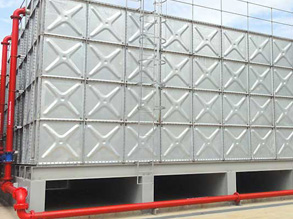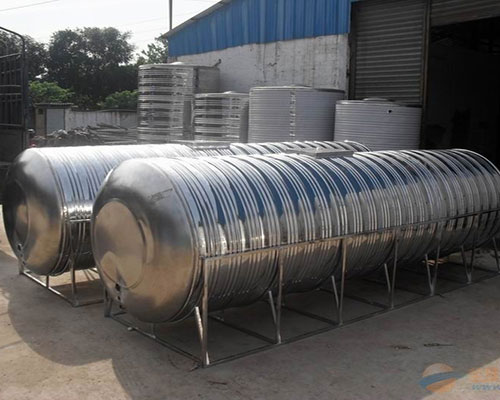Start by opening the outlet tap to empty all water from it. Connect the hose and pipes to the open tap to direct water into a location where it wont cause any erosion.
Scoop all water in the bottom of the stainless steel water tank using a bucket. This is the water that normally remains after draining it. Ensure that you remove all the water remaining by either using a wet or dry vacuum to drain or suck water remains.
Make the cleaning mixture to help in removing a lot of sediment and residue from the tank. The cleaning mixture makes work easier. To make the mixture simply mix the hot water with the laundry detergent powder and mild detergents.
Scrub the inside walls of the tank using a bristle brush with the cleaning solution. Move the arm horizontally all sides as you apply a lot of pressure on the brush. Do this around the entire walls of the tank. Scrub off any grease or residue. Do this until you remove as much sludge and slime as possible.
Use the power washer to properly clean the inside of the tank. Scrub the inside on the tank to again remove the tough sediment and residue. Follow the following steps when cleaning using the power washer;
Preparing the tank all the time is actually expensive and time consuming. Therefore it is important to ensure that you get the best resin compound from the market so that you wont be preparing your tank all the time.
Use a garden sprayer to spray the leaking part on the inside. Take the resin compound and ensure that it is well packed. Resin compound is gluey and combustible. It works perfectly for stainless steel materials.
Mix the compound with a Ketone solution. However, in most cases, the two are purchased mixed already. After some time, the solution may start hardening. This is solved by adding a small amount of acetone.
Fill the power washer with the cleaning solution
Hold it to find the best distance which works best to remove dirt, debris and sediment
Do this continuous until you are satisfied that everything that makes the tank dirt has been completely removed
Ensure that you always wear safety goggles when cleaning using the pressure washers. This is because they are very powerful
You can also use a wooden spatula to rub the residue from the bottom of the tank
For those sediments and dirt that have trouble in getting them off, you can use baking soda to remove it. Sprinkle the inside walls of the tank with the baking soda and ensure you scrub them with brush.
Scrub all the corners and joints of your stainless steel tank. As you scrub ensure that you pay a lot of attention to joints and corners because these are places where residue stuck mostly. It may be difficult to clean in this places but spend extra time to clean them.
The moment you are satisfied that you have scrubbed well and removed most or all of the residue from the inside of your steel tank. Rinse the tank thoroughly. Use the hose and pipes in spraying down the walls to rinse it.
You can also rinse the tank by filling hot water and allowing the tank to stand for some hours. You can then drain it. Ensure that you collect and safely dispose all the drained water. Do the process again until water is completely free from detergent and sediment.
Remove the remaining liquid and any residue using the vacuum. Vacuum the tank by attaching the wet or dry vacuum to vacuum it out. Ensure that you get the hose into cracks corners and crevices of your tank to remove all the residue.
Flush the hoses and pipes of the tank by pouring some cleaning solution into them. Use the water pump to pump the solution through the tank. Remove any dirt and sediment inside. Repeat the same process again using hot water.
After scrubbing the inside walls and bottom of your tank, you can then perform the disinfecting process. Start by filling your tank almost three quarters with clean water. Add some chlorine bleach to the tank using a ratio of 50 ppm to the amount of water. Use the following guidelines
250 gallon tank-4 cups of bleach
500 gallon tank-1/2 gallon of bleach
750 gallon tank-3/4 gallon of bleach
1000 gallon tank-1 gallon of bleach
After adding the right amount of bleach, fill the rest of the tank with another clean water. This will enable the bleach to mix well with the rest of water in the tank. Leave the solution inside the tank for about 24 hours.
Ensure that nobody comes near the solution because it can be harmful. Use chlorine strips in checking the amount of chlorine periodically and drain the tank completely.
Cleaning stainless steel tank is very easy, however it takes a little time and extra effort. The above procedures illustrates step by step ways of cleaning your stainless steel tank. It is therefore important to clean your stainless steel water tank regularly for better results. If you want to clean Galvanized Pressed Steel Water Tank is leaking, you can learn other solutions.















